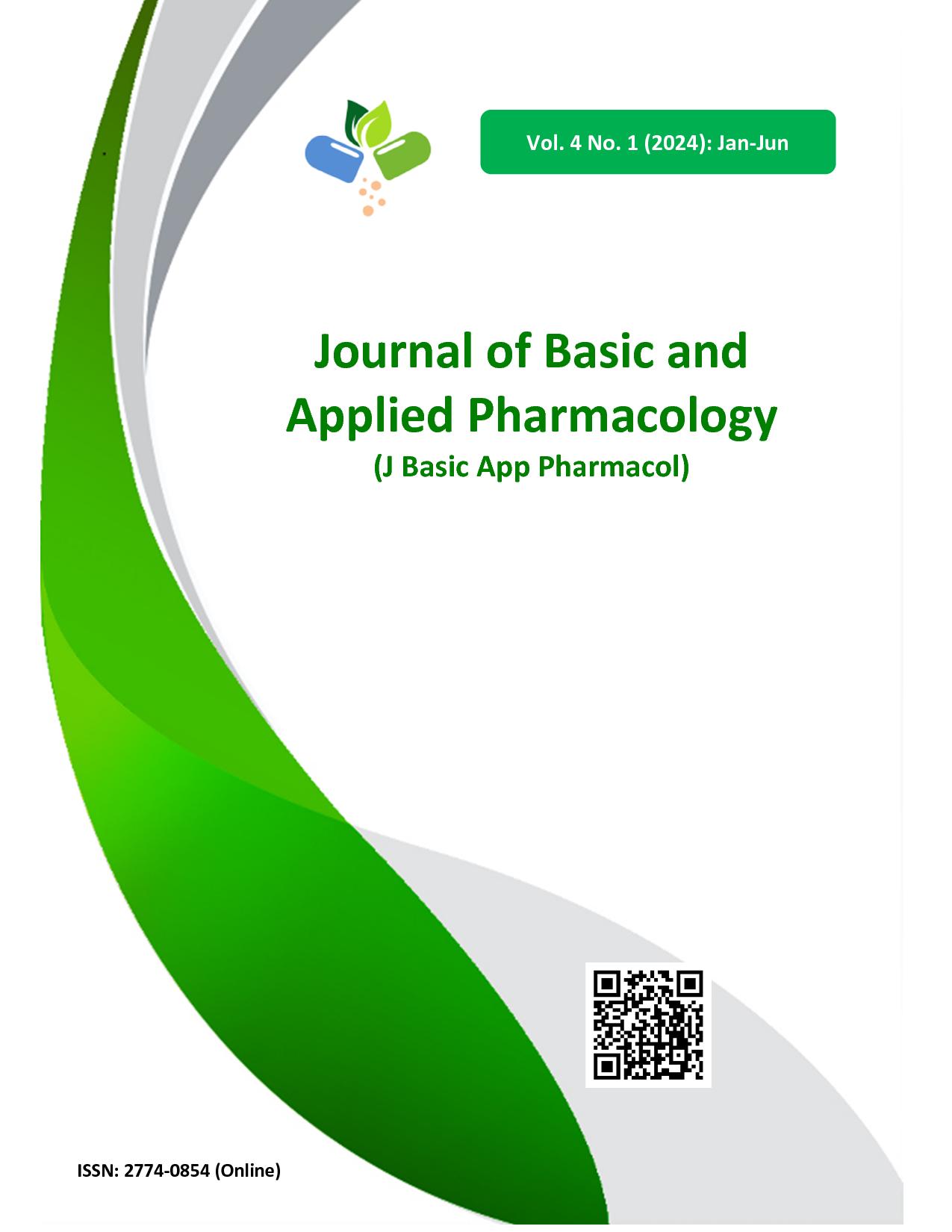Principles of Pharmacotherapy in Pediatric Patients: Fundamental Pharmacological and Pharmacokinetic Knowledge and its Applicability
Main Article Content
Abstract
This review article offers a comprehensive overview of the fundamental principles underpinning the management of pharmacotherapy in pediatric patients. Recognizing the distinct pharmacological and pharmacokinetic attributes of children is imperative for the safe and efficacious administration of drugs. By exploring critical concepts encompassing drug absorption, distribution, metabolism, and excretion within pediatric populations, healthcare providers can inform decisions when prescribing medications for children across all the age groups. Additionally, the implementation of pharmacokinetic/pharmacodynamic (PK/PD) principles in clinical practice assumes paramount importance in tailoring drug regimens to suit individual pediatric patients, thereby optimizing therapeutic outcomes and mitigating the potential for adverse events. As the landscape of pediatric pharmacotherapy research continues to advance, it is essential for healthcare professionals to remain up to date with the latest developments to ensure the provision of optimal care for this vulnerable patient demographic.
Article Details

This work is licensed under a Creative Commons Attribution-NonCommercial-NoDerivatives 4.0 International License.
Upon acceptance of an article, the Pharmacological and Therapeutic Society of Thailand will have exclusive right to publish and distribute the article in all forms and media and grant rights to others. Authors have rights to use and share their own published articles.
References
Lim SY, Pettit RS. Pharmacokinetic consi-derations in pediatric pharmacotherapy. Am J Health Syst Pharm. 2019;76:1472-1480.
Batchelor HK, Marriott JF. Paediatric pharmacokinetics: key considerations. Br J Clin Pharmacol. 2015;79:395-404.
Barker CIS, Standing JF, Kelly LE, Hanly Faught L, Needham AC, Rieder MJ, et al. Pharmacokinetic studies in children: recom-mendations for practice and research. Arch Dis Child. 2018;103:695-702.
Lu H, Rosenbaum S. Developmental pharmacokinetics in pediatric populations. J Pediatr Pharmacol Ther. 2014;19:262-276.
Wagner J, Abdel-Rahman SM. Pediatric pharmacokinetics. Pediatr Rev. 2013;34: 258-269.
Pan SD, Zhu LL, Chen M, Xia P, Zhou Q. Weight-based dosing in medication use: what should we know? Patient Prefer Adherence. 2016;10:549-560.
Jóźwiak-Bebenista M, Nowak JZ. Paracetamol: mechanism of action, applications and safety concern. Acta Pol Pharm. 2014; 71:11-23.
Gerriets V, Anderson J, Nappe TM. Aceta-minophen [Internet]. Treasure Island (FL): StatPearls Publishing; [Updated 2023 Jun 20, Cited 2023 Oct 10]. Available from: https://www.ncbi.nlm.nih.gov/books/NBK482369/
Holladay J, Winch P, Morse J, Anderson BJ, McKee CT, Rice-Weimer J, et al. Acetaminophen pharmacokinetics in infants and children with congenital heart disease. Paediatr Anaesth. 2023;33:46-51.
Micromedex® (electronic version). Acetaminophen. Merative, Ann Arbor, Michigan, USA. Available at https://www.micromedexsolutions.com/micromedex2/librarian/CS/A0F0E7/ND_PR/evidencexpert/ND_P/evidencexpert/DUPLICATIONSHIELDSYNC/9334F3/ND_PG/evidencexpert/ND_B/evidencexpert/ND_AppProduct/evidencexpert/NDT/evidencexpert/PFActionId/evidencexpert.DoIntegratedSearchSearchTerm=acetaminophen&UserSearchTerm=acetaminophen&SearchFilter=filterNone&navitem=searchALL (cited: Oct/ 3/2023)
Abernethy DR, Burckart GJ. Pediatric dose selection. Clin Pharmacol Ther. 2010;87: 270-271.
Lajoinie A, Henin E, Kassai B. Choisir la forme pharmaceutique orale la plus adaptée à l'enfant [Oral formulation of choice for children]. Arch Pediatr. 2015;22:877-885.
Little P, Francis NA, Stuart B, O'Reilly G, Thompson N, Becque T, et al. Antibiotics for lower respiratory tract infection in children presenting in primary care: ARTIC-PC RCT. Health Technol Assess. 2023;27:1-90.
Egunsola O, Choonara I, Sammons HM. Safety of levetiracetam in paediatrics: a systematic review. PLoS One. 2016;11: e0149686.
de Martino M, Chiarugi A, Boner A, Montini G, De' Angelis GL. Working towards an appropriate use of ibuprofen in children: an evidence-based appraisal. Drugs. 2017;77:1295-1311.
Sicari V, Zabbo CP. Diphenhydramine [Internet]. Treasure Island (FL): StatPearls Publishing; [Updated 2023 Jul 10, Cited 2023 Oct 10]. Available from: https://www.ncbi.nlm. nih.gov/books/NBK526010/
Zhou P, Jia Q, Wang Z, Zhao R, Zhou W. Cetirizine for the treatment of allergic diseases in children: a systematic review and meta-analysis. Front Pediatr. 2022;10:940213.
Oliver AJ, Covar RA, Goldfrad CH, Klein RM, Pedersen SE, Sorkness CA, et al. Randomized trial of once-daily fluticasone furoate in children with inadequately controlled asthma. J Pediatr. 2016;178:246-253.
Dallo M, Patel K, Hebert AA. Topical antibiotic treatment in dermatology. Antibiotics (Basel). 2023;12(2):88.
Verzhanskaya TY. Primenenie atropina dlia lecheniia progressiruiushcheĭ miopii u deteĭ i podrostkov [atropine use for progressive myopia in children and adolescents]. Vestn Oftalmol. 2017;133:89-98.
Sandhu N, Thomson D, Stang A. In children with chronic suppurative otitis media, should one prescribe topical or systemic antibiotics? Paediatr Child Health. 2012;17: 385-386.
Spurling GK, Doust J, Del Mar CB, Eriksson L. Antibiotics for bronchiolitis in children. Cochrane Database Syst Rev. 2011; 15:CD005189.
Muchão FP, Souza JM, Torres HC, De Lalibera IB, de Souza AV, Rodrigues JC, et al. Albuterol via metered-dose inhaler in children: lower doses are effective, and higher doses are safe. Pediatr Pulmonol. 2016;51:1122.


